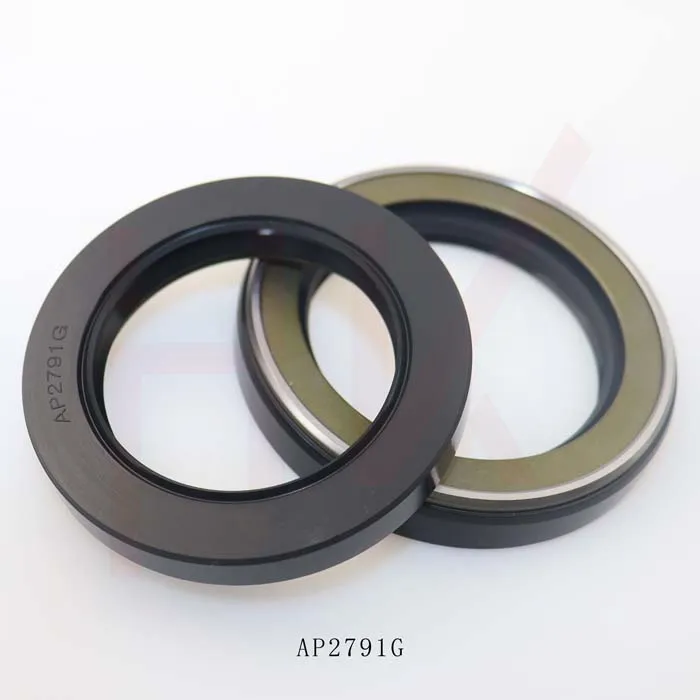11월 . 13, 2024 21:30 Back to list
hydraulic oil seal material
Understanding Hydraulic Oil Seal Materials A Comprehensive Overview
Hydraulic systems play a crucial role in various industries, including construction, manufacturing, and automotive, where they manage power transmission through fluid movement. One essential component of these systems is the hydraulic oil seal, which is responsible for preventing fluid leaks and contamination. The effectiveness and longevity of hydraulic seals heavily depend on the materials used in their construction. This article will delve into the different types of materials utilized for hydraulic oil seals, their properties, and their applications.
Types of Seal Materials
1. Nitrile Rubber (NBR) Nitrile rubber, or Buna-N, is one of the most common materials used for hydraulic seals. It offers excellent resistance to petroleum-based fluids, making it a popular choice for hydraulic applications. NBR is characterized by its good tensile strength and abrasion resistance, although it may not perform well in extreme temperatures or in the presence of certain chemicals. It is suitable for environments with moderate temperatures, typically ranging from -30°C to 100°C.
2. Fluoroelastomer (FKM) Fluoroelastomers like Viton® are renowned for their exceptional resistance to heat, chemicals, and aging. They can withstand temperatures up to 200°C and are resistant to a wide range of fluids, including hydraulic oils, fuels, and various solvents. FKM seals are primarily used in high-performance applications where reliability and durability are critical, making them ideal for aerospace and automotive sectors.
3. Polyurethane (PU) Polyurethane seals are gaining popularity due to their remarkable wear resistance and low compression set properties. These seals can accommodate a range of hydraulic fluids and maintain their integrity under dynamic conditions. PU offers excellent elastic properties and can operate effectively in temperatures from -30°C to 80°C. They are often employed in applications that involve high pressures and dynamic movement.
4. PTFE (Polytetrafluoroethylene) PTFE seals are celebrated for their outstanding chemical resistance and low friction properties. They can operate in extreme temperature ranges, from -200°C to 260°C, making them suitable for very harsh environments. However, they may require additional reinforcements or fillers to improve their strength and sealing performance under pressure. PTFE is widely used in industries like pharmaceuticals and food processing, where hygiene and corrosion resistance are paramount.
hydraulic oil seal material

5. Silicone Rubber Silicone rubber seals can withstand extreme temperatures, ranging from -50°C to 200°C, which makes them ideal for applications with temperature fluctuations. Although silicone is not as resilient against oils as other materials, it performs well in applications involving water and steam. It is often utilized in food processing and medical applications, where resistance to various environments is required.
Choosing the Right Material
Selecting the appropriate material for hydraulic oil seals is critical and depends on several factors, including
- Operating Conditions The temperature range, pressure levels, and type of hydraulic fluid are essential in determining which material will perform optimally. - Chemical Compatibility Ensuring that the seal material is compatible with the specific hydraulic fluids to avoid degradation is crucial for maintaining system integrity. - Dynamic vs. Static Applications Different materials perform better in either dynamic (moving) or static (stationary) applications. It's necessary to evaluate the nature of the application before making a material choice.
- Cost Considerations While some materials might offer superior performance, they often come at a higher cost. Balancing performance needs with budgetary constraints is essential.
Conclusion
Hydraulic oil seals are crucial for the efficient operation of hydraulic systems across various industries. Understanding the properties and applications of different seal materials is key to making informed decisions that enhance performance and reliability. By considering factors such as operating conditions, chemical compatibility, and application type, engineers and technicians can select the most suitable seal material, ultimately leading to improved efficiency and longevity of hydraulic systems. Investing time and resources in choosing the right hydraulic oil seal material will pay dividends in performance and cost-effectiveness in the long run.
-
The Trans-formative Journey of Wheel Hub Oil Seals
NewsJun.06,2025
-
Graphene-Enhanced Oil Seals: Revolutionizing High-Pressure Oil Sealing
NewsJun.06,2025
-
Future of Hydraulic Sealing: Advanced Intelligent TCN Oil Seals
NewsJun.06,2025
-
Don’t Let a Broken TCV Oil Seal Ruin Your Day
NewsJun.06,2025
-
Bio-Inspired Dust Seals for Better Sealing Performance
NewsJun.06,2025
-
Biodegradable and Sustainable Hydraulic Seal Materials
NewsJun.06,2025
-
Top Oil Seal Solutions for Your Industrial Needs
NewsMay.22,2025
Products categories
















